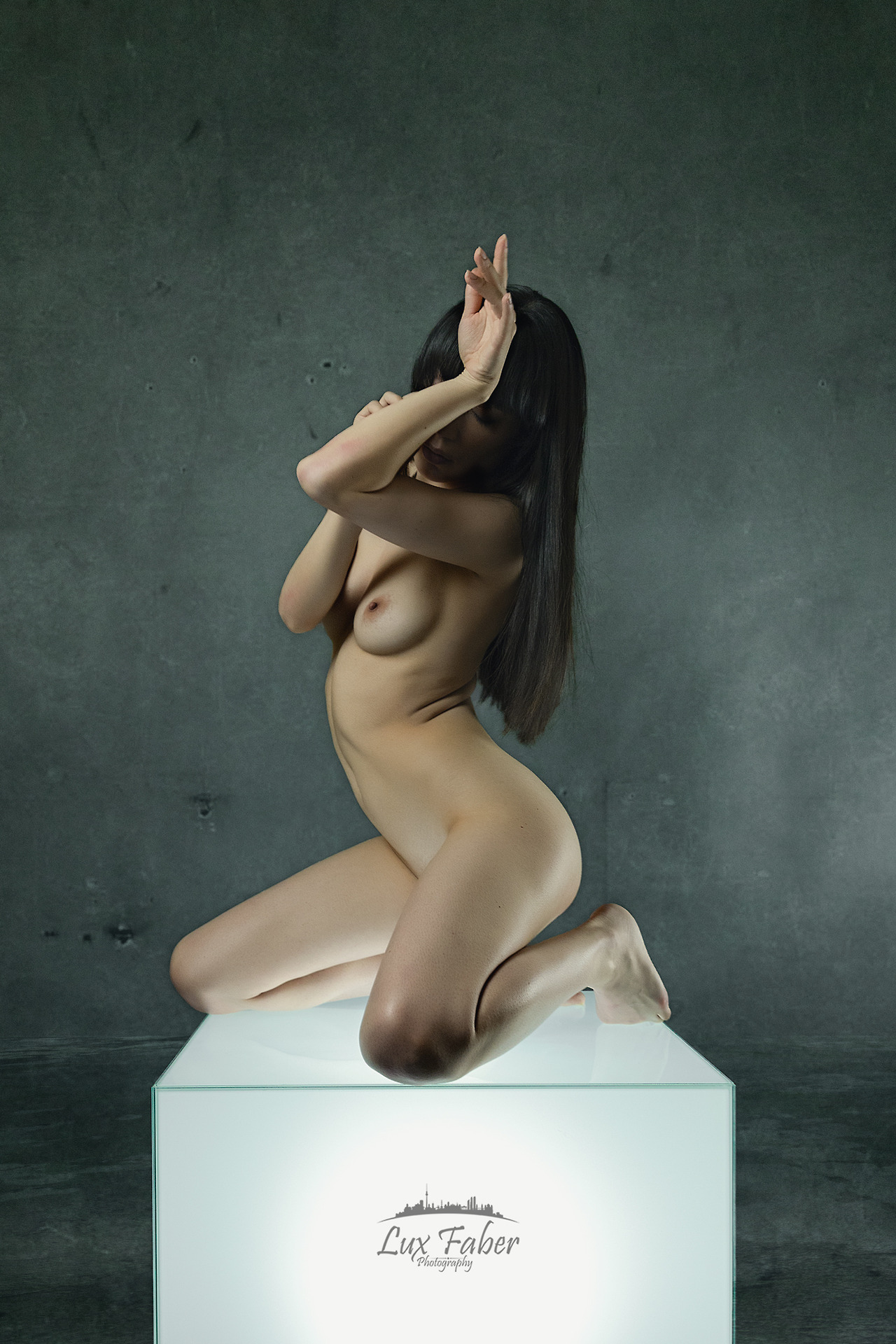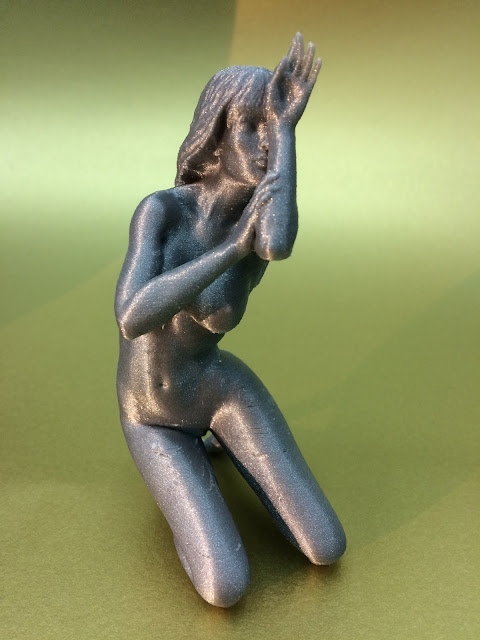As always, the challenge was to use the pose controls in Daz Studio to copy the essence of this pose as accurately and artistically as possible and then create a printable 3D model.
Starting from Daz 3D Studio's Genesis 8 female as a base, I began by observing that model’s pelvis was rotated about the Y axis with the right hip flexed and internally rotated, whilst the left hip was extended sideways and backwards. I kept checking the position of the bent limbs in relation to the X-Y plane so that everything would end up making good contact with the floor.
Both arms had to be extended backwards, the left arm position being rather left to guesswork and imagination. I copied the extended fingers and bridging of the right hand and mirrored this position in the left hand.
With the exception of the horizontal area under the left inner thigh, the 3D model needed little or no support material. Keeping the breasts smaller and the head tipped upwards also removed the need for support material under the nose or chin. The hair was copied from the Katherine hair style and then sculpted in Blender as usual.
She printed beautifully, first time, in Fillamentum Vertigo Grey.

Many thanks to MaxO for giving me permission to share his photo here.






































